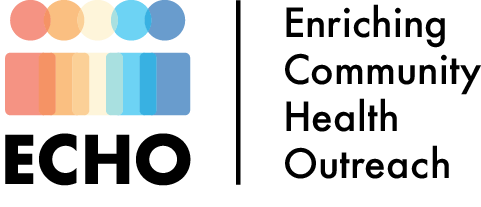The Other Epidemic Still Raging
The Other Epidemic Still Raging
By Corinne McCabe
As other ECHO blog posts have reported, the opioid epidemic has ravaged America over the past decades and its consequences have been deadly. Opioids like hydrocodone (Vicodin), oxycodone (OxyContin), codeine, and heroin have a high rate of dependency, addiction, and importantly death when mixed with other depressants like alcohol. In a year where a different type of epidemic has taken precedence in our lives, it’s easy for the opioid epidemic to fall off the radar. So what’s happened in the last year? What has been done, and notably, where do we go from here?
While new prescription guidelines have been put in place and awareness about the potential hazards of opioids has increased in the past years, it’s generally agreed that the next steps involve mitigating the effect of the already existing epidemic by increasing access to educational resources, science-backed recovery programs, harm reduction resources like naloxone, and sterile needle and syringe services.
Firstly, the World Health Organization recommends that access to naloxone should be made readily available to healthcare personnel and first responders but also to opioid users and their close contacts. (Naloxone, often known by its brand name Narcan, is a life saving drug that can treat opioid overdoses in emergencies.) In the past few years, many barriers to the access of naloxone have been reduced in the United States, but as a new study from this year points out, it hasn’t been enough. They say the progress being made doesn’t necessarily translate to the public being more likely to obtain the drug, citing legal, procedural, and social constraints as well as a lack of awareness of its availability (Cohen et al.). Social stigma in particular combined with a lack of education about its sale and use by both pharmacists and users is large in part why there’s an increasing sense of urgency to make naloxone available over-the-counter. There’s hope this could be a reality soon as the FDA has done its first testing of an over-the counter drug label for two forms of naloxone earlier this year (Cohen et al.).
In their report on the opioid epidemic, the American Medical Association (AMA) states that this year should be increasingly alarming with the rising number of opioid-related deaths in more than forty states and the high amount of illegally produced and dangerous synthetic opioids, like fentanyl, in circulation throughout the country (American Medical Association). Even though there hasn’t been as much media coverage about it this year, reports like these from physicians show us that opioid use and opioid related deaths are still pressing public health issues that need to be addressed like any other. A recent discussion by the AMA points out that the opioid epidemic does not exist in isolation, but rather that it’s part of the larger issue of addiction in America. They cited that many of the fentanyl overdoses occurring in the last year were the result of non-opioids like methamphetamine and cocaine being cut with the potent drug. Therefore, a discussion of the opioid epidemic cannot exist in isolation either, and must encompass broader solutions to treat, destigmatize, prevent, and reduce the harm of addiction across all fronts (Harris et al.).
As experts like Dr. Charles Reznikoff of the AMA Pain Care Task Force notes, the COVID-19 pandemic has had far reaching effects on all aspects of healthcare but, relevantly, he and others are concerned that addiction resources and programs might be among the first things to be cut out of budgets as hospitals and other institutions are struggling financially. Abrupt ends to these programs could have devastating effects for those struggling with addiction both currently and in the future as Dr. Reznikoff grimly points out that drug addiction will continue to plague our society long after COVID-19 has ended (Harris et al.). This means that supporting and pressuring representatives across all levels of government to make healthcare funding a priority will ensure that the destruction caused by a new epidemic won’t further compound with the already existing one.
Much work needs to be done, and it first starts with educating the public about the opioid epidemic and, in doing so, destigmatizing addiction and addiction treatment. Beyond that, there are specific action items relating to the epidemic as it stands right now and how it’s being affected by COVID-19:
● Governors can adopt new DEA guidelines so that patients can receive treatment and medication for Opioid Use Disorder through virtual appointments
● Each state request blanket exceptions from the Substance Abuse and Mental Health Services Administration to allow people in Opioid Treatment Programs (OTP) to continue receiving medications at home
● Classify medications for addiction, naloxone, and harm reduction organizations as “essential services” to make access easier during “Shelter-in-Place” orders
● Remove restrictions on Medicaid preferred drug lists to prevent shortages and allow those in OTP to have their medications covered
● Expand PPE priority to harm reduction programs and further implement policies to increase access to sterile needles and syringes services

